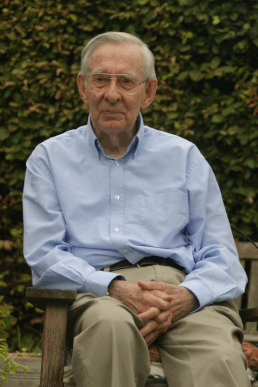Sandy Green (mathematician) facts for kids
Quick facts for kids
Sandy Green
|
|
|---|---|
 |
|
| Born | 26 February 1926 |
| Died | 7 April 2014 (aged 88) |
| Citizenship | British, American |
| Alma mater | University of St Andrews St John's College, Cambridge |
| Known for | Work on group representation theory, Green's relations |
| Awards | Senior Berwick Prize (1984) de Morgan Medal (2001) |
| Scientific career | |
| Fields | Mathematics |
| Institutions | Bletchley Park University of Manchester |
| Doctoral advisor | Philip Hall, David Rees |
| Doctoral students | Perdita Stevens |
James Alexander "Sandy" Green (born February 26, 1926 – died April 7, 2014) was a brilliant mathematician. He was a professor at the University of Warwick in England. He was well-known for his important work in a special area of math called representation theory.
Contents
Early Life and School
Sandy Green was born in Rochester, New York, in 1926. Later that year, his parents, who were from Scotland, moved the family to Toronto, Canada. In 1935, when Sandy was nine, his family moved back to Britain. His father became a French professor at the University of Cambridge.
Education Journey
Sandy went to school at the Perse School in Cambridge. He was very smart and won a scholarship to the University of St Andrews when he was only 16 years old in 1942. He earned his first degree in 1944. After serving in the war, he got his honors degree in 1947. He then went on to get his PhD from St John's College, Cambridge in 1951.
Sandy's Career
Working During World War II
In the summer of 1944, when Sandy was 18, he was asked to help with scientific work for the country during World War II. He was sent to Bletchley Park. This was a top-secret place where people worked to break German codes. Sandy worked in a section called the "Newmanry." Here, he was a "human computer," doing calculations to help break secret German naval codes. They even used special computers called Colossus machines there!
Life as a Professor
After the war, Sandy started teaching. His first teaching job was in 1950 at the University of Manchester. In 1964, he became a Reader at the University of Sussex. A year later, in 1965, he became a professor at the new Mathematics Institute at Warwick University. He led the algebra group there.
Sandy also spent time as a visiting professor in other countries. He visited universities in the United States, France, Germany, and Portugal. Even after he retired from Warwick, he continued to be active in math at the University of Oxford. He published his last paper when he was 80 years old!
His Work in Mathematics
Sandy Green made many important discoveries in mathematics. He found all the "characters" for certain types of math groups. He also created something called the "Green correspondence" in a field called modular representation theory.
Two important math ideas are named after him:
- Green functions: These are used in the study of how groups behave.
- Green's relations: These are used in the study of mathematical structures called semigroups.
His last major work was a new and improved version of his 1980 book, Polynomial Representations of GL(n).
Family Life
Sandy met his wife, Margaret Lord, at Bletchley Park. She also worked there, operating the Colossus computers in the same section as Sandy. They got married in August 1950. They had two daughters and one son. Sandy lived in Oxford until he passed away.
Awards and Honors
Sandy Green received many important awards for his work.
- In 1968, he was chosen to be a member of the Royal Society of Edinburgh.
- In 1987, he became a member of the Royal Society, which is a very high honor for scientists in the UK.
- He also won two prizes from the London Mathematical Society:
- The Senior Berwick Prize in 1984.
- The de Morgan Medal in 2001.

